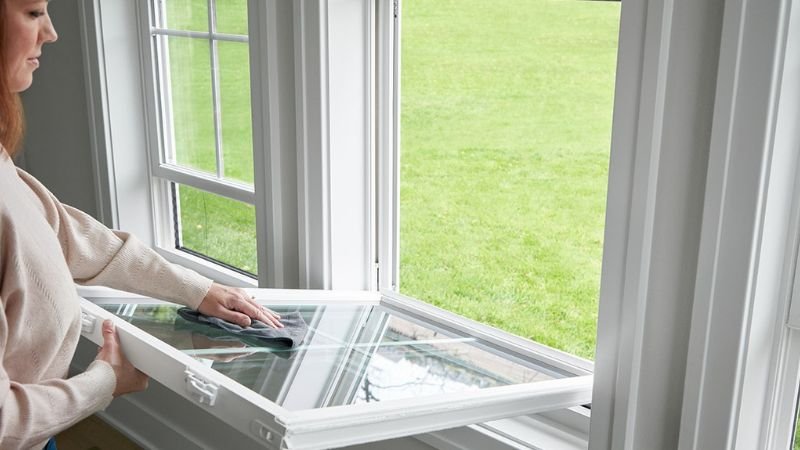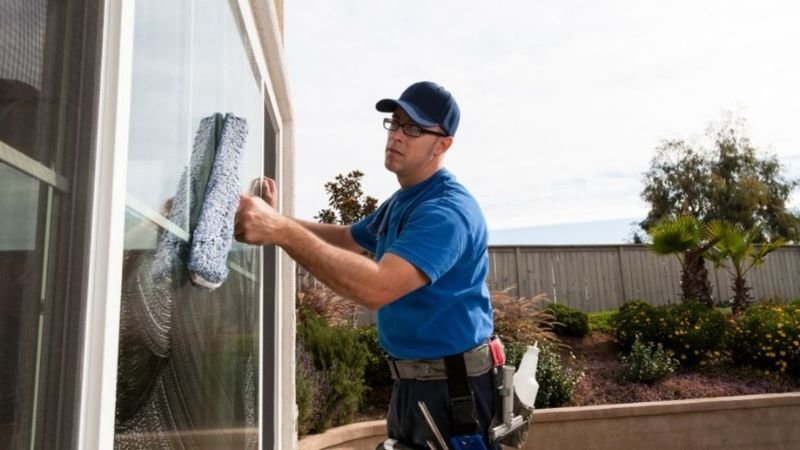Clean windows brighten up any space, enhancing the natural light and offering clear views. Yet, keeping indoor windows spotless can be a challenge. Smudges, streaks, and dust often obscure the glass, making regular cleaning essential. In this guide, we’ll reveal the 10 best indoor window washing techniques to ensure your windows are sparkling clean. Whether you’re using common household items or specialized tools, these methods will simplify your cleaning routine and deliver professional-quality results. Perfect for homeowners and renters alike, these techniques will make window cleaning less of a chore and more of a rewarding task.
10 Best Indoor Window Washing Techniques
Keeping your indoor windows clean can be a rewarding task, allowing natural light to brighten your home and providing clear views of the outside world. Here are the 10 best indoor window washing techniques to ensure your windows are spotless and streak-free.
Use a Vinegar and Water Solution
A homemade vinegar and water solution is one of the most effective and eco-friendly ways to clean indoor windows. Mix equal parts of white vinegar and water in a spray bottle, then spray the solution onto the window. Use a microfiber cloth to wipe the window in a circular motion, starting from the top and working your way down. Vinegar cuts through grime and leaves windows sparkling without streaks. For tougher spots, let the solution sit for a few minutes before wiping. This method is not only cost-effective but also safe for your health and the environment, as it avoids harsh chemicals found in many commercial cleaners.
Utilize a Squeegee
Professional cleaners often use squeegees for a reason—they are incredibly effective at removing water and cleaning solutions without leaving streaks. You may have to do this again if the glass is very dirty. Start at the top of the window and pull the squeegee down in a straight line, wiping the blade with a clean cloth after each pass. This technique ensures that no residue is left behind, resulting in a clear, streak-free finish. Squeegees come in various sizes, so choose one that fits your window dimensions. For smaller panes, a smaller squeegee works best to maneuver around edges and corners.
Opt for Microfiber Cloths
Microfiber cloths are highly absorbent and excellent at capturing dust and dirt, making them perfect for window cleaning. Unlike paper towels or regular cloths, microfiber doesn’t leave lint or streaks on the glass. Apply your cleaning solution with one towel, then buff the window with a second, dry one. The fibers in these cloths trap grime effectively and polish the surface to a shine. Additionally, microfiber cloths are reusable and washable, making them an environmentally friendly choice. Invest in high-quality microfiber cloths for the best results and longevity.
Try a Commercial Window Cleaner
Commercial window cleaners are formulated to tackle tough grime and provide a streak-free finish. When choosing a window cleaner, look for one that is ammonia-free, as ammonia can damage window tint and is harsh on the lungs. Spray the cleaner onto the window or a cloth, and wipe in a circular motion to remove dirt. For an extra shine, buff the window with a dry, clean cloth afterward. Commercial cleaners are convenient and effective, especially for heavily soiled windows or when you need a quick cleaning solution.
Use Distilled Water
The minerals in hard water can cause streaks and stains on your glass. Using distilled water for your cleaning solution eliminates this problem. Distilled water is free from minerals, ensuring a clear, spotless finish. Mix it with vinegar or a few drops of dish soap for an effective cleaning solution. When using distilled water, you’ll notice fewer streaks and a clearer view, as it doesn’t leave behind the residues that hard water can. This simple change can make a significant difference in the quality of your window cleaning results.
Employ a Steam Cleaner
Steam cleaners offer a chemical-free way to clean and sanitize your windows. The high temperature of the steam cuts through grease and grime effortlessly. Fill the steam cleaner with distilled water, and use the appropriate attachment for windows. After running the steam cleaner over the window’s surface, use a microfiber cloth to remove any loose dirt. This method not only cleans but also kills bacteria and mold spores, promoting a healthier indoor environment. Steam cleaning is particularly effective for windows in kitchens and bathrooms, where grime can build up quickly.
Tackle Tough Spots with Baking Soda
Baking soda is a gentle abrasive that can tackle stubborn spots and stains on windows. Make a paste with baking soda and water, and apply it to the affected areas with a cloth. Gently scrub the spots, then rinse with a vinegar solution or water. Baking soda is effective at removing bird droppings, tree sap, and other persistent stains without scratching the glass. This technique is excellent for targeting specific areas that need extra attention, ensuring your windows are thoroughly clean.
Use Newspaper for a Streak-Free Shine
An old but effective trick for streak-free windows is using newspaper. After cleaning your window with a solution, use crumpled newspaper to wipe it dry. The ink acts as a mild abrasive, polishing the glass to a shine. Newspaper doesn’t leave lint and is highly absorbent, making it ideal for window cleaning. This method is not only cost-effective but also a great way to recycle old newspapers. Ensure you use black-and-white pages, as colored ink may transfer to the glass.
Clean Windows on a Cloudy Day
The weather can impact your window cleaning results. When windows are cleaned on a sunny day, the cleaning solution may dry too rapidly and leave streaks. Rather, schedule your window cleaning on a cloudy day. The slower drying time allows you to thoroughly wipe away the solution before it evaporates, resulting in a clearer finish. This tip is especially useful for large windows or patio doors, where streaks can be more noticeable.
Regular Maintenance
Maintaining clean, clear windows requires routine upkeep. Develop a routine to clean your windows at least once every three months. Frequent cleaning prevents dirt and grime from building up, making each cleaning session easier and more effective. Dusting window sills and frames regularly also helps maintain overall window cleanliness. By staying on top of window maintenance, you can enjoy the benefits of natural light and unobstructed views year-round.
Conclusion
By incorporating these 10 best indoor window washing techniques into your cleaning routine, you can achieve crystal-clear windows with minimal effort. Whether you prefer natural cleaning solutions or high-tech tools, there’s a method here to suit your needs. Keep your windows looking their best and enjoy the benefits of a brighter, cleaner living space.
FAQs
What is the best homemade solution for washing windows?
A mix of equal parts vinegar and water is highly effective for streak-free window cleaning
How often should I clean my indoor windows?
It’s recommended to clean indoor windows at least once every three months to maintain clarity and brightness.



